“Hi, can you take a photo?”
The Peruvian girl in her teens asked in Spanish.
“Sure,” I replied.
I stretched out my hands, ready to receive her camera but she stood next to me.
“Oh,” I realized then that she wanted to take a photo with me.
Her friends took turn to stand beside me, posing for photos.
I felt like a Korean superstar at that moment with my legion of giggling teenage fangirls surrounding me. I looked around – I was the only Asian there. Scratch that, I could be the only non-Peruvian there at the Ahuashiyacu Waterfall.

my fan girls
Tarapoto - The City of Palms
I arrived in the high jungle city of Tarapoto the night before, a name that sounds more Japanese than Latin. The climate was tropical and humid, a drastic change from the Sierras of Peru. Moto-taxis swarm the roads, buzzing and honking incessantly.
Ah, a slice of Asia.
Far in the north of Peru, Tarapoto is way out of the Gringo’s Trail – the typical backpacker route in South America. I stopped here on my way from Iquitos to Chachapoyas and was ready to leave the next morning, but I was surprised with what this little city of 66 000 inhabitants had to offer.
Tarapoto – also known as the ‘City of Palms’ – sits on the high jungle plateau (cloud forest) of the vast Amazon rainforest and thus, is surrounded by many waterfalls, one of my favourite natural phenomena.
- YOU MIGHT ALSO LIKE: Is this the Most Majestic Waterfall in Peru?
The most famous Tarapoto waterfall is the Ahuashiyacu: a 40m drop of clear water into a pool where you can take a bath, and is located just 30min from Tarapoto. Ahuashiyacu means “singing/laughing water” which, ironically, doesn’t suit the lore of the waterfall.
According to legend, a pair of youth fell in love against the wishes of their parents, who were chiefs of the villages or Gods (I couldn’t remember exactly). Like all tragic love stories, they eloped from home only to anger the Gods and be met with terrible fates:
The guy was turned into a Taurus and the girl into a waterfall – which was named after her. A statue of the pair was erected at the entrance, the man with horns and a body of a bull no less.
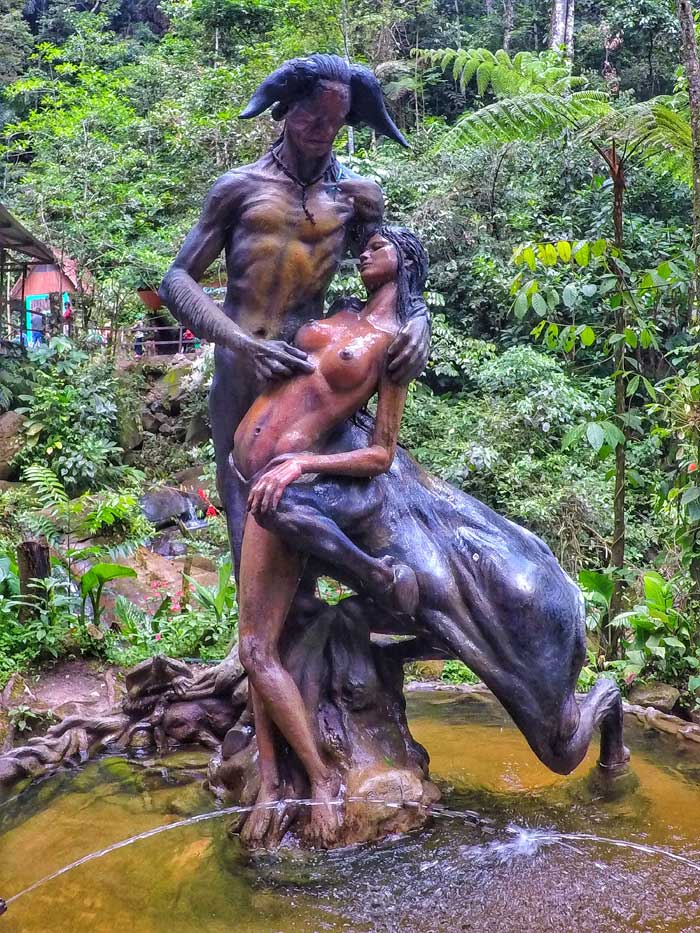
The entrance to the waterfall is a 10min walk through a wooden shack, moss covered rocks and slippery steps, with the surroundings a bright greenery and a river flowing. From afar, I could see the start of the waterfall amidst trees covered by clouds.
It was a refreshing scene and a welcome change from the snow-capped mountains of the past few months.

The waterfall was decent.
Not too bad, but nothing impressive either. I’m no longer easily impressed after chasing so many waterfalls.
What amazes me was the number of locals here on a weekday afternoon. The pool was overcrowded! It was such a turn off to get into the packed pool (and I was too shy to strip after being asked for photos).
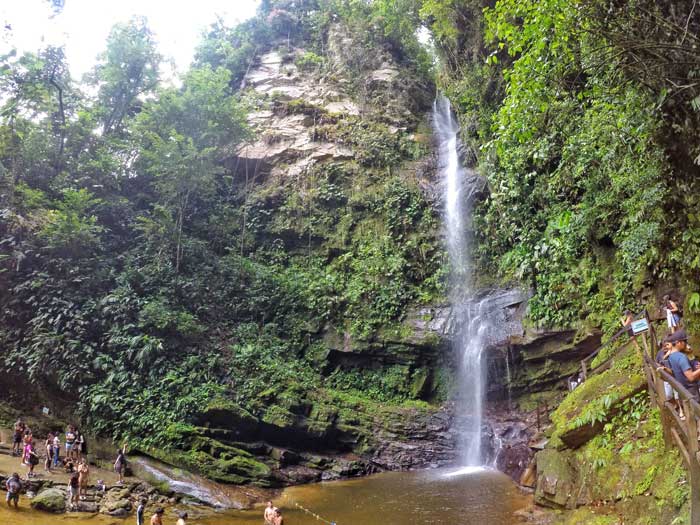
A sign that this region of Peru is still not yet overrun with tourists is that the most ‘popular’ attraction in Tarapoto – a standard feature on brochures and tour agency itineraries - has no foreigner besides me. Though the waterfall is packed, everyone is a local.
Getting to the Cataratas del Ahuashiyacu
All tour agencies offer trips to the waterfall and I went with one booked via my hostel. I paid PEN $36/USD $12 (Oct 2017) for the 3-hours tour that includes transport and a guide.
You don’t really need a guide in my opinion. If you’re confident in your Spanish, flag down a mototaxi in Tarapoto, practice your haggling skills, and arrange a schedule with the driver. Expect to pay PEN $10-$20.
Another option is to take a colectivo taxi (shared taxi) but without a confirmed means of getting back. I wouldn’t recommend that though. My travel philosophy is not to get into a hassle just to save a few dollars. It trains your abundance mindset and save you time and worry.
My friend Carly was in Peru for 9 days, and here's her budget breakdown in Peru.
There are numerous waterfalls near Tarapoto like the Huacamaillo, Pucayaquillo and Pishurayacu falls. But if the big daddy (or mommy in this case) of them all is this, I wouldn’t recommend the others – unless you are a hardcore waterfall chaser.
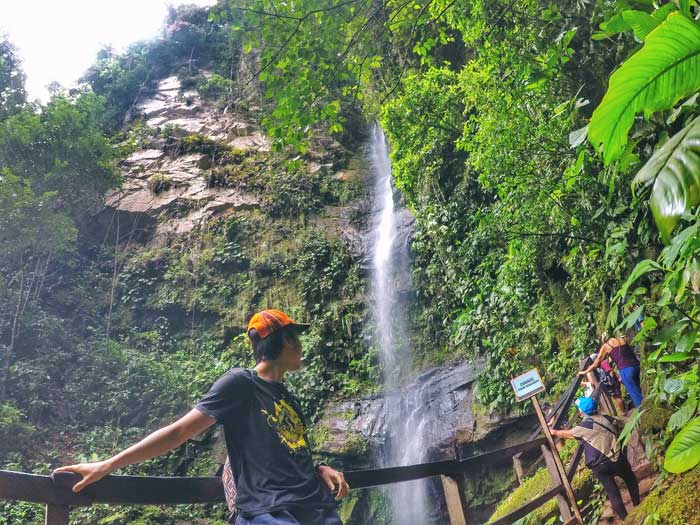
Lamas - The City of 3 Levels
After a lunch break back in Tarapoto, I was picked up for my second tour of the day: a visit to the Castle of Lamas.
Honestly, I had no idea what to expect. I just wanted to fill up my day with activities. In my mind, the castle is probably just a cheap replica of a famous castle somewhere and a place for kids.
Sure enough, on my tour bus was a little girl of around 4 years old, excited to live out her princess fantasy. Oh great.
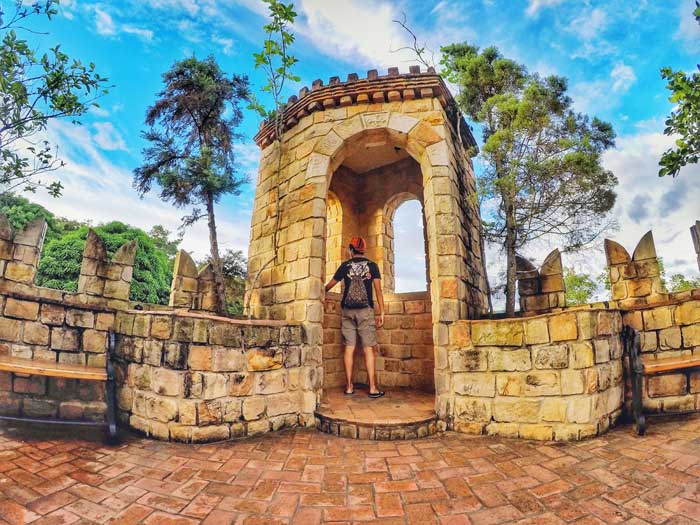
The town of Lamas, a 35min ride from Tarapoto, is known as the ‘City of Three Levels’.
On the first level at the foot of the hill: Indigenous people live there, walk barefoot, speak a mix of Quechua and jungle tongues, and carve artisanal ornaments.
The middle level contains a museum and several artisanal shops, restaurants and cafes. We stopped here for a visit to the museum and ‘the best frappe of the region’.
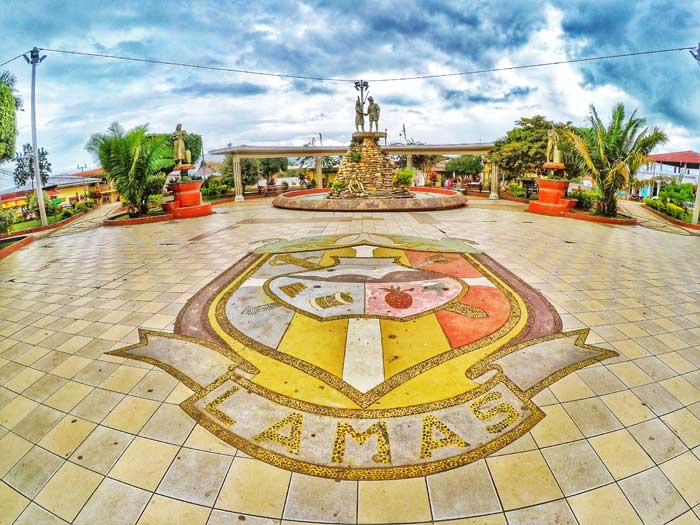
The highest level is the colourful main plaza with a statue of a conquistador shaking hands with an Indigenous person, and of course, the highlight of the trip: the Castle of Lamas.
The Castle that Saved the Town
The Castle of Lamas is an oddity just by thinking: a European-styled medieval castle in the Amazon forest, tall and mighty surrounded by poverty.
On first sight, the beige-bricked, squarish castle didn’t look that impressive.
But as I stepped through the gate, I was greeted by a pool and potted plants, which reminded me more of a luxury hotel than anything.
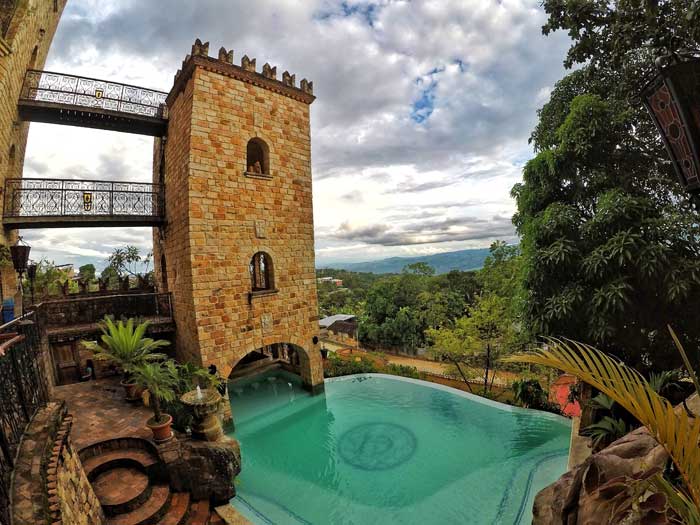
As I explored the 5 levels, I understood why this castle is a popular attraction with both locals and tourists alike.
The castle was meticulously built with fine attention to details.
Sculptures and emblems adorned the interior and carvings on the exterior. Replica of medieval paintings filled the rooms: of religious, of renaissance, and of native figures.
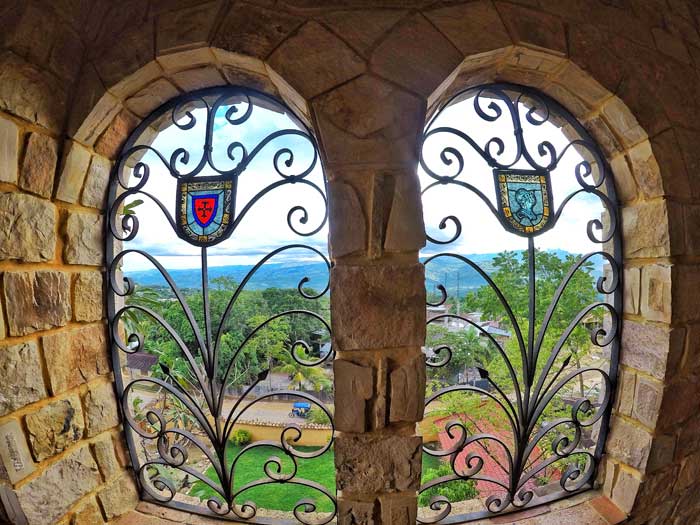
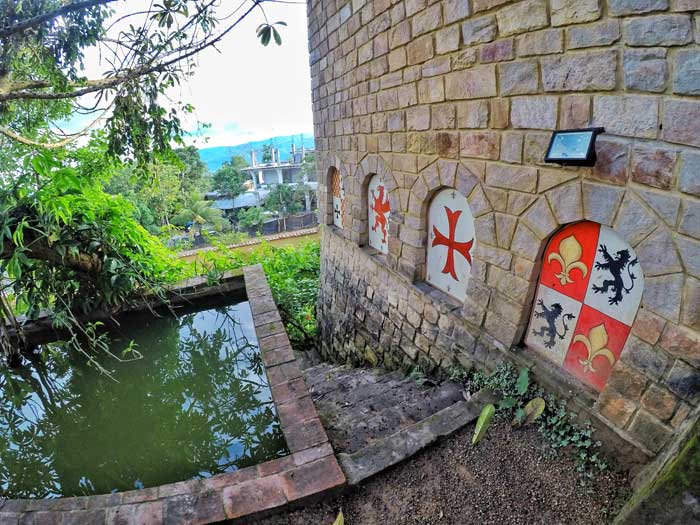
The ceilings were painted to tell a story, and the stained-glass windows allow in rainbow-coloured sun rays. The crests of different ancient Houses decorated the walls.
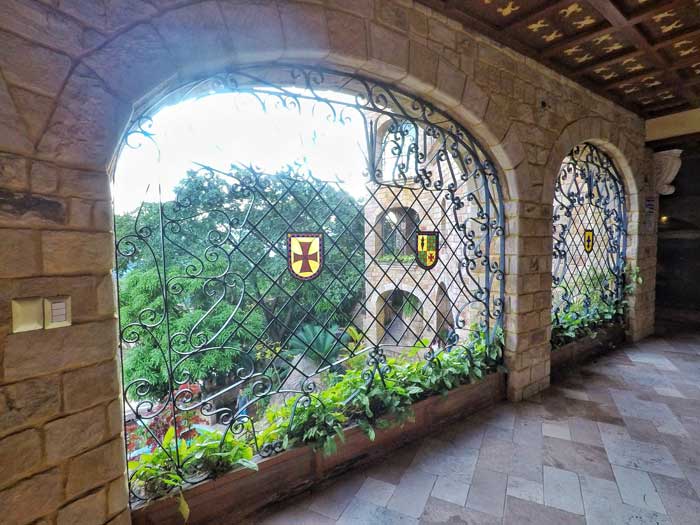
At the top, you are rewarded with a view of the surrounding valleys, river and mountains.
I felt like I had stepped into a Hogwarts Castle. The castle is ridiculously photogenic, a huge contrast to the eyesore food stands, metal sheds, and mototaxis around it.

Interestingly, there is no historical significance to this Tarapoto castle. There were no medieval lords, no battle of Lamas (related to this castle), no dungeons and dragons.
It was just a product of a rich Italian who lived in the region and decided to build something that has great sentimental value to him. According to the owner, the castle represents the best of both worlds: the European and the Native Americans’ world.
Like it or not, the Castle saved the town in terms of creating jobs and tourism. It is now the Number One attraction in Lamas and consistently bring in tourist money.
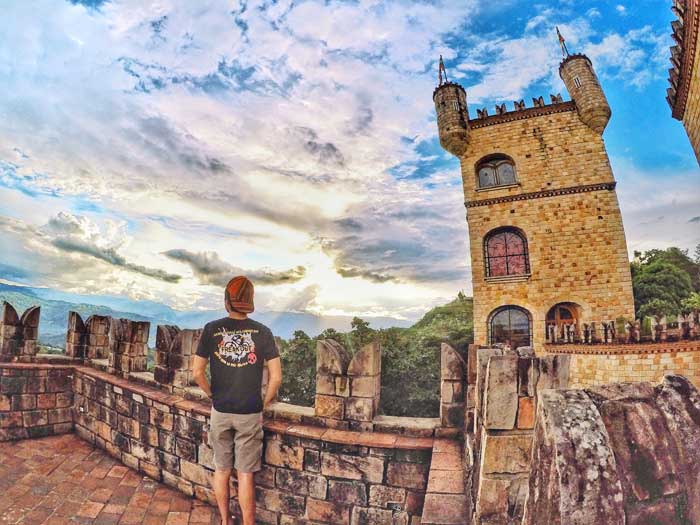
I was pleasantly surprised.
Barrio Huayco
As part of the tour, we went to a nearby village for our last stop.
We alighted from our van to the sounds of indigenous music. Children and women in traditional clothes danced in a circle, while the men played the drums and flute.
Unwilling tourists were pulled to join in the dance and on the signal of the ‘chief’, kids went around with a container asking for donations.
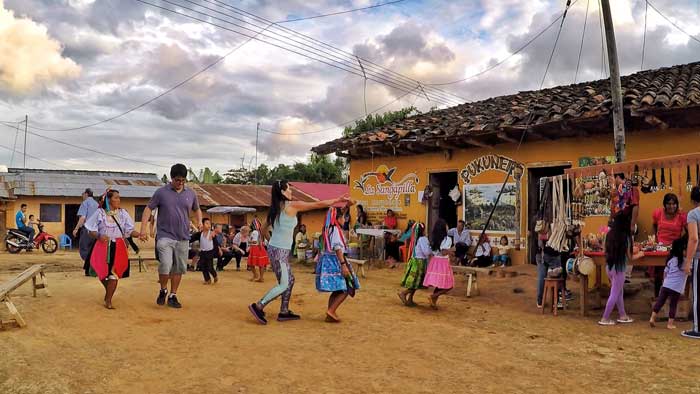
They did not smile nor give thanks. Charming.
Touristy souvenir stands add colours to the otherwise dull village. The buildings were made of clay, wood and covered with straws. The entire village is probably a couple of streets wide.

As the sun set, we made our way back to Tarapoto. I was glad to leave that blatant tourist trap.
watch a 1min highlight of the trip here
Getting to the Castle of Lamas
Similarly, tour agencies offer trips to Lamas. I paid PEN $35 and on hindsight, it was a rip-off. I did no research and wasn’t aware of this castle at all
Lucky you, I went through that and you don’t have to. Here’s how you can DIY at a much lower price:
There is a small terminal in Tarapoto with plenty of colectivos (shared taxis) that leave when full. A trip to Lamas costs PEN $5 and takes between 35-45min. Ask your hostel for the terminal.
From the main square in Lamas, there are colectivos that come back to Tarapoto and costs the same.
That is one-third of the price of a tour!
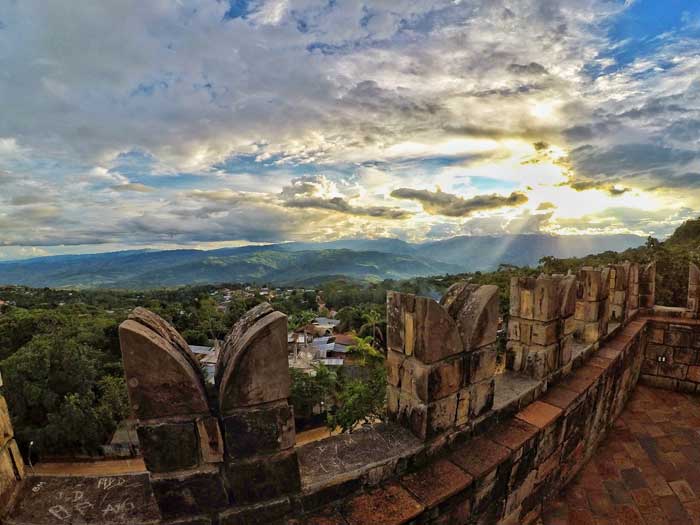
And now, it’s your turn.

